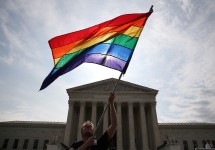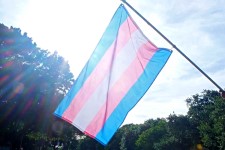History of the Pride Flag
Colorful flags are flown at many LGBTQ+ events. The history of the Pride Flag goes back to the 1970s, and the design has changed numerous times over the years. Here’s a timeline of some of the major LGBTQ+ flags and what they stand for.
1978:
Gilbert Baker, a friend of San Fancisco’s openly gay City Supervisor Harvey Milk, designs the first rainbow flag in collaboration with his friend Lynn Segerblom (also known as Faerie Argyle Rainbow). The eight-color flag first flew over the San Francisco Gay Freedom Day Parade in June of 1978. Each of the original colors had their own unique symbolism. Hot pink: sex; Red: life; Orange: healing; Yellow: sunlight; Green: nature; Turquoise: magic and art; Indigo: serenity; and Violet: spirit.
1979:
The six-color flag enters popular use following the assassination of Harvey Milk. The hot pink stripe was eliminated over the difficulty obtaining the fabric. With only seven colors, activists noticed it was impossible to split in half to be displayed more easily in public, and so the turquoise stripe was eliminated as well. The six-color flag is the most common LGBTQ+ flag worldwide.
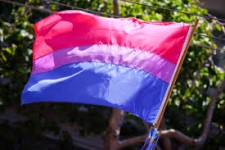
1998:
Michael Page designs the bisexual pride flag, a three-color design. Page explained that the pink represents same-sex sttraction, the blue represents opposite-sex attraction, and the purple overlap represents attraction to both.
1999:
Monica Helms, a transgender woman, creates the transgender pride flag. The light pink and blue represent the colors traditionally associated with girls and boys, and the white represents transitioning, neutral or undefined genders, and intersexuality. “[N]o matter which way you fly it, it is always correct, signifying us finding correctness in our lives,” Helms said of the flag.
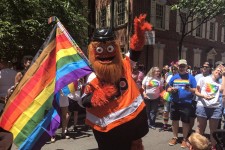
2017:
Following an outcry over racism in Philadelphia’s Gayborhood, the city commissioned the design of a new eight-color flag with black and brown stripes to recognize the contributions of LGBTQ+ people of color. The flag was unveiled at Philadelphia’s Pride celebration in 2017 and remains the official LGBTQ+ flag of the City of Philadelphia.
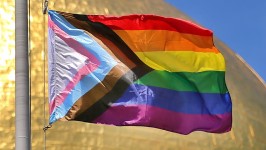
2018:
Designer Daniel Quasar creates the “Progress Flag”, which combines elements of the 2017 Philadelphia flag and the trans flag with the traditional rainbow flag. According to Quasar, the colors in the chevron represent trans individuals, people of color, those living with HIV/AIDS, and deceased members of the LGBTQ+ community.





